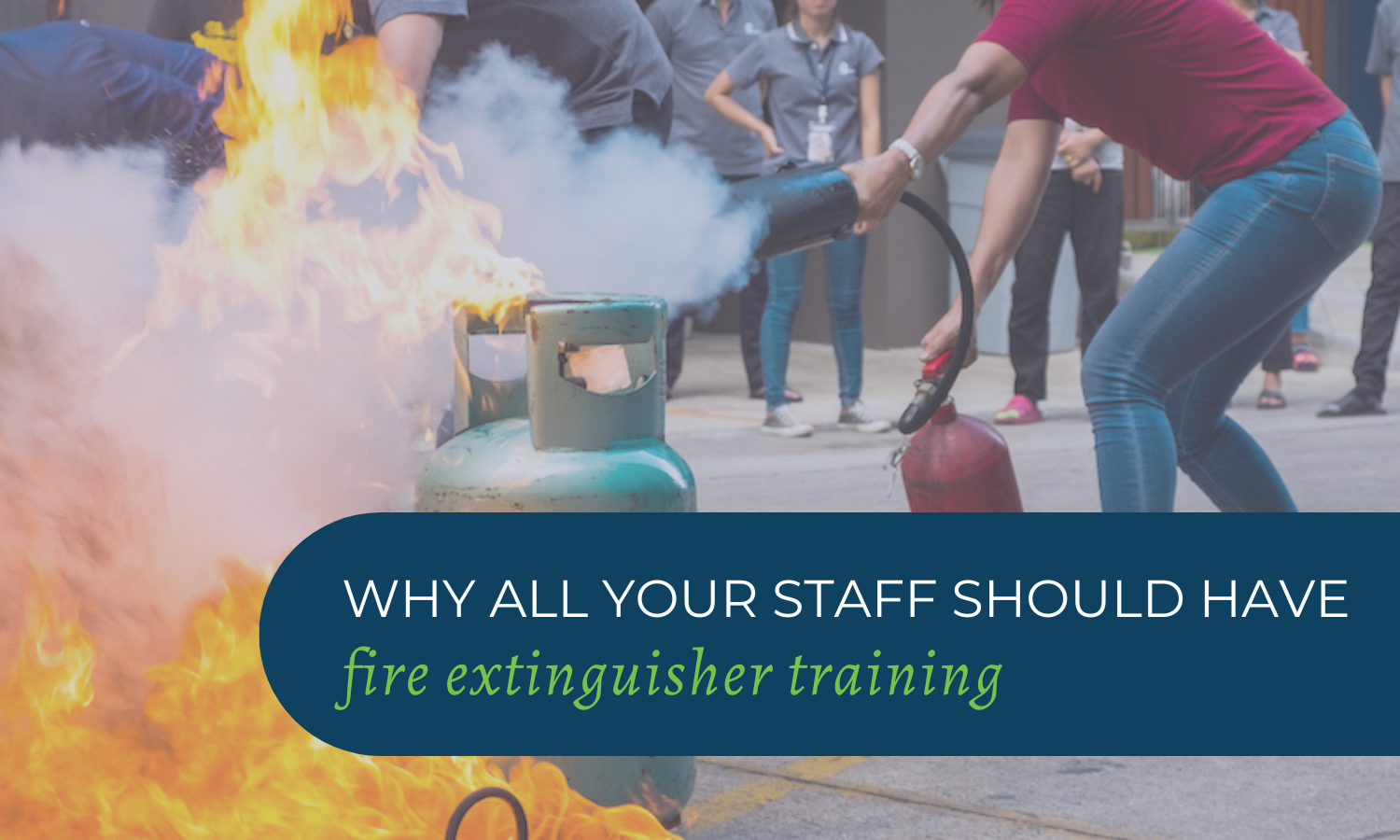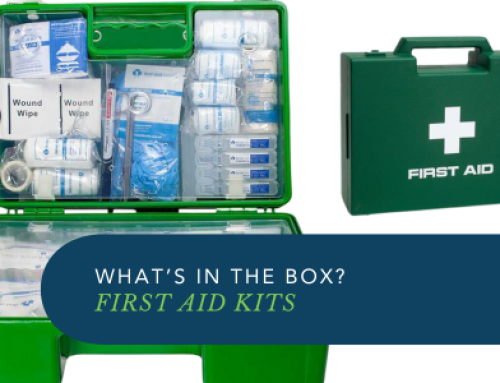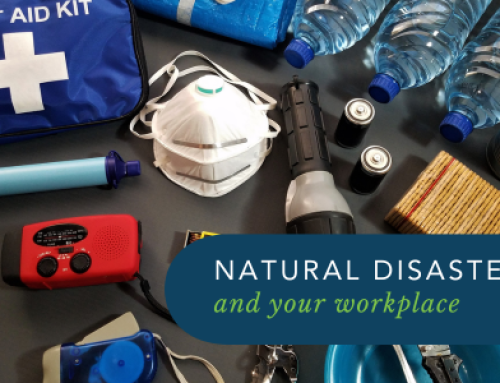Fire safety plans often include the use of fire extinguishers, but many people are surprised to learn that there isn’t a one-size-fits-all solution when it comes to extinguishers.
There are five main types of fire extinguishers, each designed for specific fire classes, as fires are caused by different fuels. Using the wrong extinguisher can escalate the situation.
Having the correct type (or combination) of fire extinguishers and knowing how to use them properly is essential for workplace safety and compliance.
This ensures you not only meet safety regulations but also prevent creating bigger risks by using the wrong extinguisher during an emergency.
In this blog, we’ll cover fire extinguisher types and fire classes, highlighting why comprehensive fire extinguisher training is crucial for all employees—not just those trained as fire wardens or safety officers.
Types of Fire Extinguisher
These are the 5 primary types of fire extinguishers:
- Foam
- Water
- Wet Chemical
- Carbon Dioxide (‘CO2’)
- Dry Powder → Standard
Multipurpose/High performance
There are technically six types of fire extinguishers due to the two variations of Dry Powder extinguishers, but for simplicity, we’ll treat them as one category in this blog.
The following graphic outlines the different types of fire extinguishers and highlights which fire classes they are designed to tackle effectively. Understanding these distinctions is key to ensuring workplace fire safety.
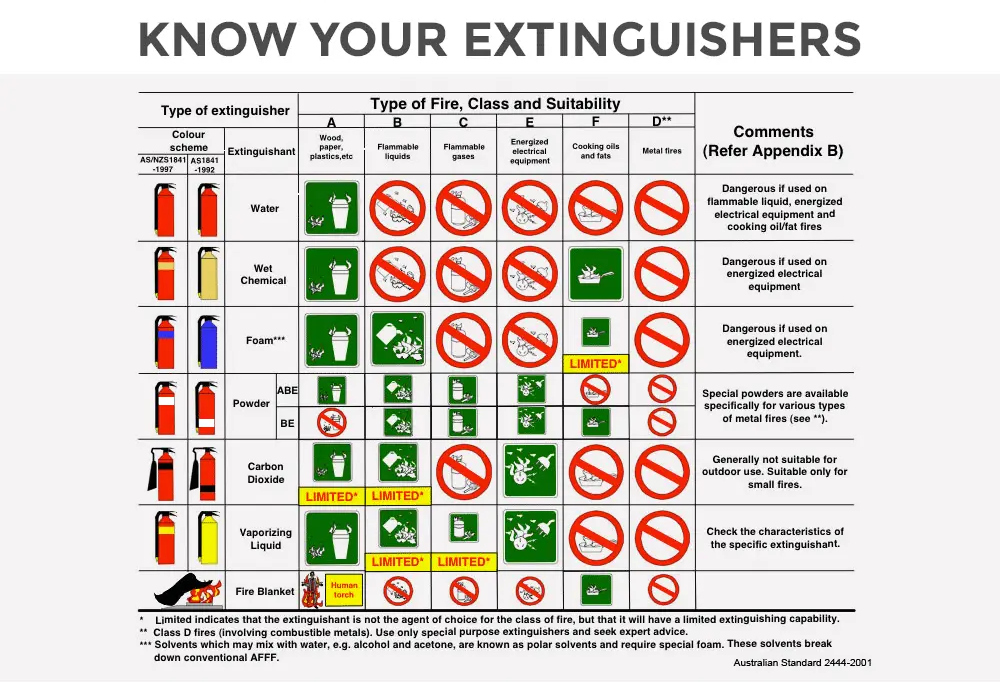
Understanding Fire Classes
Fire classes categorise fires based on the type of fuel that causes ignition. Knowing these classifications is essential for determining which fire extinguishers your workplace needs to mitigate specific fire risks effectively.
- Class A: Combustible materials like paper, fabric, and wood.
- Class B: Flammable liquids, including paint, petrol, and turpentine.
- Class C: Flammable gases such as methane, butane, or hydrogen.
- Class D: Combustible metals like potassium, magnesium, or aluminium.
Electrical Fires: Fires involving electrical equipment (the class changes once the electrical source is removed). - Class F: Fires caused by cooking oils and fats.
Using the correct fire extinguisher for the specific fire class is critical. Using the wrong type can risk re-ignition, further damage, or even create an unsafe environment.
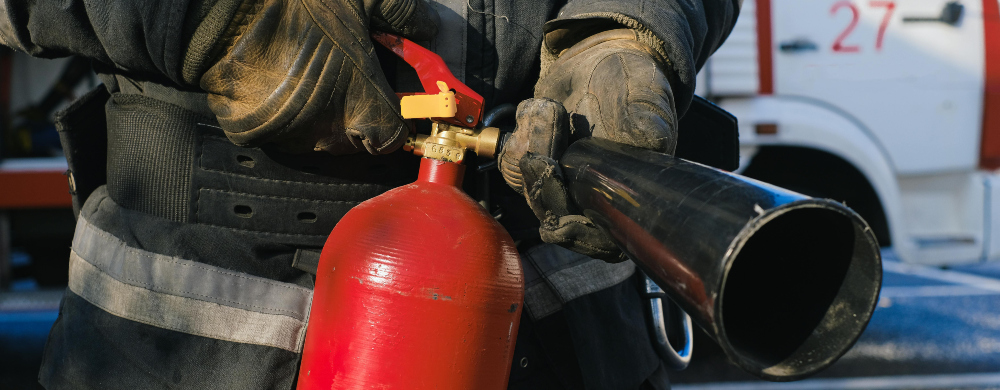
The Importance of Fire Extinguisher Training
While fire safety plans often outline the types of extinguishers available, only employees who have undergone fire extinguisher training will know how to use them effectively for different classes of fire. This knowledge is invaluable in ensuring swift, safe action during emergencies.
Although fire extinguisher training isn’t legally mandatory for all employees, we strongly recommend it. It equips staff with the skills to handle fires safely and could save lives if disaster strikes.
Take the proactive step of preparing your workplace for emergencies. Contact Workplace Emergency Management today to schedule comprehensive fire extinguisher training for your staff.
GET IN TOUCH
Are you ready for peace of mind that your workforce is as safe and prepared as possible?
With a dedicated team of staff ready to help you meet compliance requirements and improve the overall safety of your workplace, all you need to do is get in touch.
Request your free audit today!
